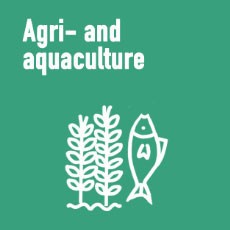Agri- and Aquaculture

This sector includes the exploitation of vegetal and animal natural resources, and involves growing crops, raising and breeding animals, harvesting timber and other plants, animals or animal products from a farm or their natural habitats (adapted from International Standard Industrial Classification of All Economic Activities (ISIC), Revision 4, Part 3, Section A).
Biodiversity

Biodiversity refers to the variety of genes, species, ecosystems and landscapes that comprise our world (UNESCO, 2010). Every species has a role to play in an ecosystem, which results in increased productivity and sustainability. However, the decline in the number of different species threatens the wellbeing of our planet. Also known as biodiversity loss, this decline negatively affects the food chains that human beings depend on; it also destroys water resources and leads to a scarcity of medicine and drug resources which could have been obtained from lost organisms (Wheeling Jesuit University, Center for Educational Technologies, 2018).

Agriculture in India

Organic agriculture in Hong Kong
Marine resources

Marine resources are materials and attributes found in the ocean that are considered to have value, whether that value is intrinsic or monetary. They include a huge number of things: biological diversity, fish and seafood supplies, oil and gas, minerals, renewable energy resources, tourism potential and unique ecosystems like coral reefs (Qamar , 2018). The ocean is the largest ecosystem on Earth; it is the planet’s life support system. Oceans generate half the oxygen we breathe and contain more than 97% of the world’s water. For this reason, the diversity and productivity of the world’s oceans is vital for humankind (Marine Conservation Institute, 2019).

